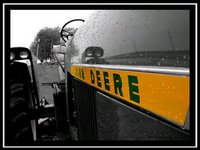
“For even the Son of Man
did not come to be served,
but to serve, and to give His life
a ransom for many.”(Mark 10:45)
Much can be learned by what is not said. Therefore, one of the questions we must ask is, what things do not appear in Mark’s account that are apparent in the others. For, as we shall see, the elements that each of the Gospel writers emphasize or fail to mention are always consistent with the portrait they are displaying of Jesus. These often overlooked realities, is what makes the Gospels so fascinating!
As we look at the popular scene of Jesus on the Mount of Olives with His disciples, we find no Bridegroom, as in Matthew, receiving the wise and rejecting the foolish virgins. Here, we have no Lord judging between the faithful and unfaithful servants; no King, enthroned in glory, separating the nations to the right and left hand. On the contrary, in Mark alone do we read, “but of that day and hour no one knows, not even the angels in heaven, nor the Son, but only the Father” (13:32). These words, as noted, are exclusive to this Gospel, nonetheless are consistently characteristic of Mark’s account. For it is here that the Son is seen with His glory laid aside, clothed in the likeness of man, and in very action a true Servant. “And in this aspect,” as Andrew Jukes notes, “like other servants, He awaits another’s will, not knowing the lord’s secrets; for "the servant does not know what his master is doing" (John 15:15). And so as Servant He says, naming Himself with other blessed servants, the holy angels – ‘Of that day and hour no one knows, not even the angels in heaven, nor the Son, but only the Father.’ Nor does this touch the truth of His Person; for that is not the question here. But just as in St. Luke the words, ‘He increased in wisdom and stature, and in favor with God and man,’ speak of Him as Son of Adam, without in any way contradicting that He is also ‘the Word made flesh’; just as His death in one aspect is spoken of as ‘a sweet savor,’ man freely giving to God what is most sweet to Him, while in another aspect it is regarded as penal and a sin-offering, the due judgment for the sins of men; so in like manner what is true of Him as Servant does not deny His lordship, which is but another view of the same wondrous and blessed Lord.”
These omissions continue to the end. In the Garden of Gethsemane, there is no references to His authority to summon twelve legions of angels had he so desired. There’s no promise of Paradise to His dying companion on the cross. There’s no sightings of saints of old being resurrected from the dead. Though all these things, as we shall see in a later week are completely consistent with Mathew’s portrait, they are beyond the parameters of the Spirit’s intention for this Gospel, thus have no place.
Furthermore, the last scene is just as distinct as the first. Jesus’ final instructions to His disciples are framed peculiarly different than in other places. In the last scene we have the commissioning of the Apostles to go and preach. However, when this commission is compared to that of Matthew’s Gospel there’s a striking omission. In Matthew we read Jesus as saying, “All power is given to me in heaven and earth,” therefore go into all the world.” The emphasis is that of authority and the kingdom (see Matthew 28:18-20 and Mark 16:15-20). As true as this is, the emphasis of such would be inconsistent with that of the Servant. For Mark, Jesus “is not discipling as with authority, or commanding that ‘all things which He has commanded to be observed in all nations”; but rather, as knowing the path of service… Now His disciples are to take His place, and He will serve in them.”
Portraits of Jesus
Mark has been called the Blue Collar Gospel, because it portrays Jesus getting down and dirty, serving, working, toiling and suffering in submission to the Father. The prophet Isaiah said,
“The ox knows its master.”(Isaiah 1:3)
And Mark quotes Jesus saying,
“For even the Son of Man
did not come to be served,
but to serve, and to give His life
a ransom for many.”
(Mark 10:45)
Reflect of Jesus as the Blue Collar Servant. What does it mean for you to follow His example in this life?
“The highest service may be prepared and done in the humblest surroundings. In silence, in waiting, in obscure, unnoticed offices, in years of uneventful, unrecorded duties, the Son of God grew and waxed strong.”
-Inscription in the Stanford University Chapel-

No comments:
Post a Comment